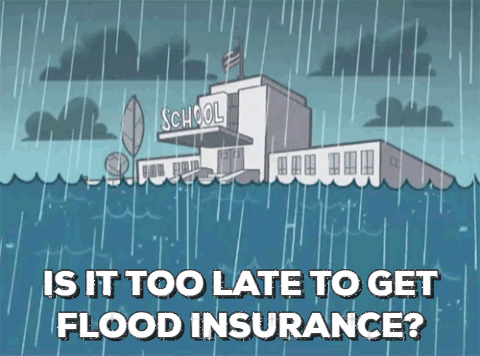The Apocalypse.
Some of us plan for it. Some of us don't.
When running a project, risks can become issues in the blink of an eye and it can feel like the end of the world. This is why it is extremely important to plan ahead. Let's plan together!
Now, just as a refresher, below are the definitions of "risk" and "issue".
"Risk: an uncertain event or condition that, if it occurs, has a positive or negative effect on one or more project objectives." (PMI, 2013, p. 559) AKA something good or bad that could possibly happen in the future such as bad weather affecting your event's attendee count or press that brings more paying customers to your business.
"Issue: A point or matter in question or in dispute, or a point or matter that is not settled and is under discussion or over which there are opposing views or disagreements." (PMI, 2013, p. 544) AKA a risk that actually happens and you have to figure out how to deal with it.
Let's pretend that you are working on a project and already identified your risks, we will move on to the stage of responding to the risks.
There are 4 ways to deal with negative risks:
1) Avoid
"When you avoid a risk, you stop it happening totally. Worried that a particular feature on your software won’t go down well in the international market? Switch it off. That’s an example of avoiding a risk completely: you put a plan in place to make sure that it could never happen. You can’t do this with all risks, but it’s a handy approach to shutting down trouble before it happens where you can." - Elizabeth Harrin on thebalance.com
2) Transfer
"Transferring a risk means shifting the responsibility for it on to someone else. The best example of this is an insurance policy. When you buy an insurance policy, you shift some of the impact of the risk on to the insurance firm, and they would be liable if the risk did happen." - Elizabeth Harrin on thebalance.com
3) Mitigate
In this type of risk response strategy, you try to minimize either the probability of the risks happening or the impact.
For example, you find that a team member may leave for a certain duration during the peak of your project. Therefore, to minimize the impact of his absence, you identify another employee with similar qualifications from your organization and inform his boss that you may need him for your project for a period of time. - Fahad Usmani on pmstudycircle.com
4) Accept
This risk response strategy can be used with both kinds of risks, i.e. either positive risks or negative risks. Here you don’t take any action to manage the risk but you do acknowledge it.
You can accept the risk either by actively acknowledging it or passively acknowledging it. In active acceptance, you keep a separate contingency reserve to manage the risk if it occurs, and in passive acceptance, you do nothing except note down the risk. - Fahad Usmani on pmstudycircle.com
Now that you have the tools to plan negative risk responses, I'm sure you want to know more about mitigating positive risk responses! Stay tuned until next week Thursday!
Sources
Harrin, E. (2017, November 13). Here Is a Rundown of Risk Response Strategies for Negative Risks. Retrieved December 15, 2017, from https://www.thebalance.com/negative-risk-response-strategies-2779620
Project Management Institute. (2013). A guide to the project management body of knowledge (PMBOK guide). Newtown Square, Pa: Project Management Institute.
Usmani, F. (2017, October 23). Risk Response Strategies for Negative Risks or Threats. Retrieved December 15, 2017, from https://pmstudycircle.com/2015/04/risk-response-strategies-for-negative-risks-or-threats




